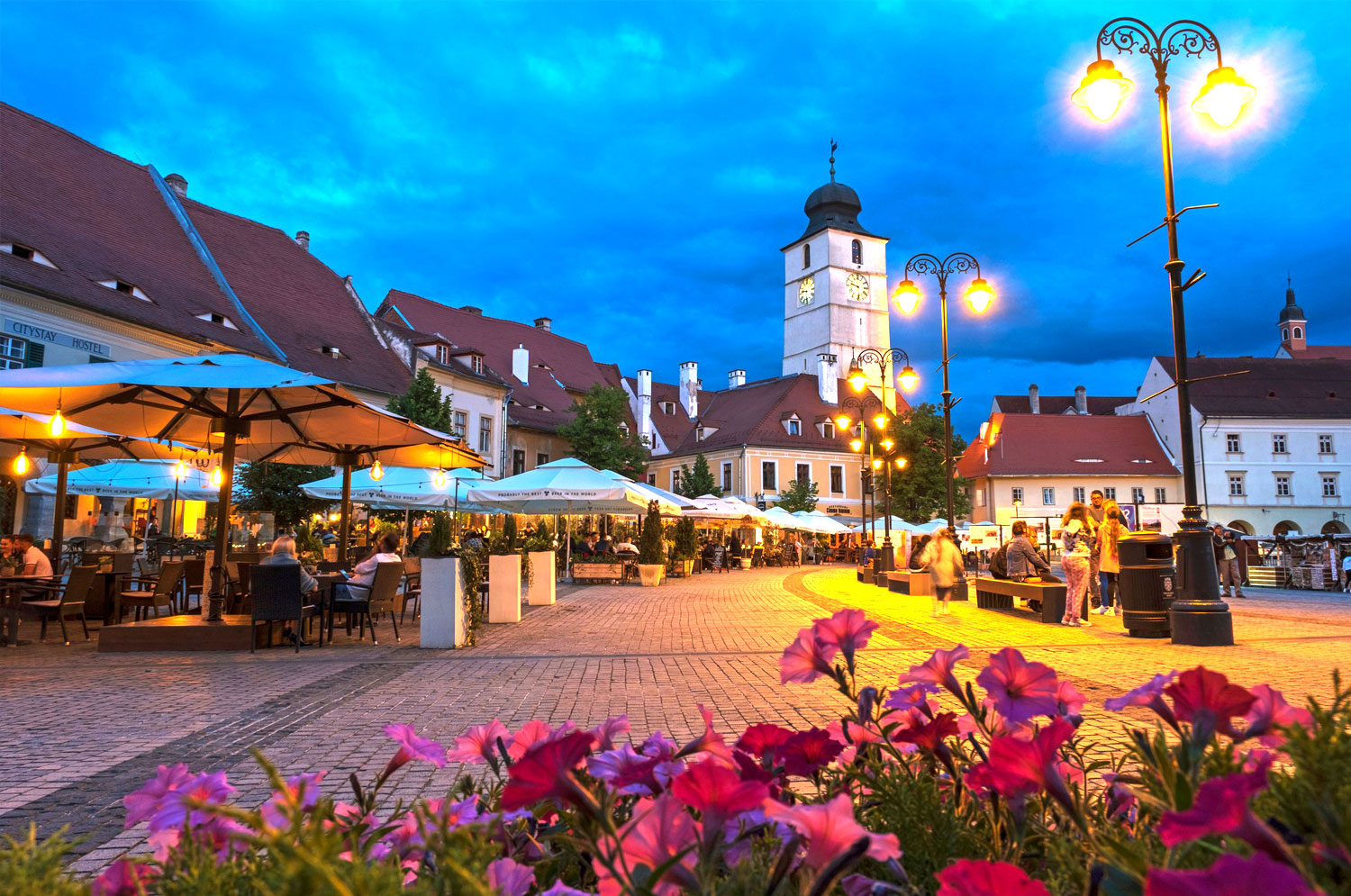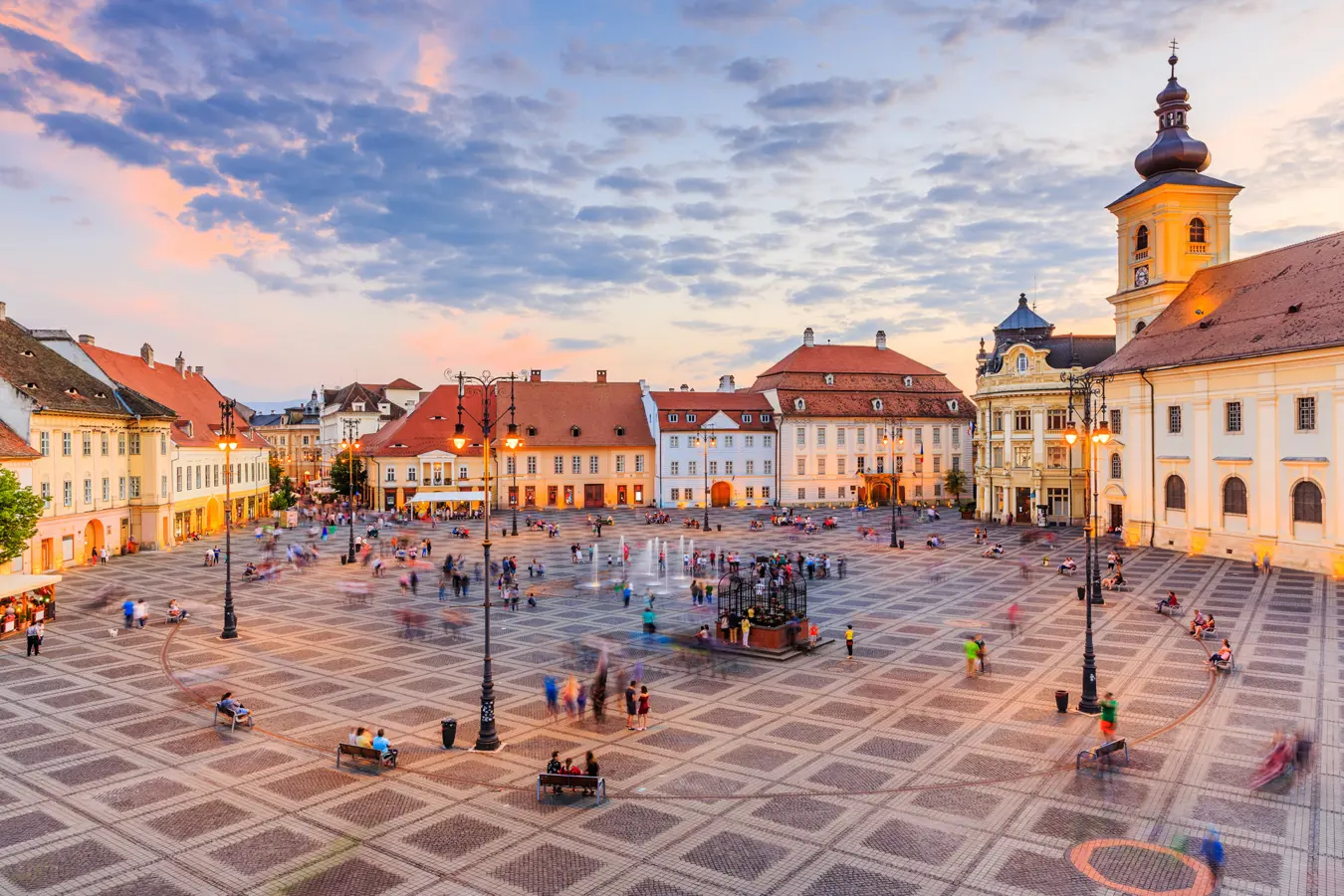



Sibiu is a city in Transylvania, central Romania. It’s known for Germanic architecture in its old town, the legacy of 12th-century Saxon settlers. Around the city are the remains of medieval walls and towers, including the 13th-century Council Tower. In the upper town, Brukenthal Palace now houses the Brukenthal National Museum, with European paintings. The nearby Evangelical Cathedral has gravestones in its walls. ― Google
May to October: Perfect weather for sightseeing and walking tours.
December: Famous for its magical Christmas market in the Grand Square.
September: Ideal for fewer crowds and golden autumn light.
By car or train: About 4.5–5.5 hours from Bucharest, 3 hours from Brașov.
By air: Sibiu International Airport (SBZ) offers domestic and European flights.
Public transport: Local buses and taxis are available, though the city center is best explored on foot.
Piața Mare (Big Square): The heart of Sibiu, surrounded by historic buildings and museums.
Piața Mică (Small Square) & Huet Square: Connected plazas with charming cafés and architecture.
Brukenthal Palace & Art Museum: One of Romania’s finest art collections in an 18th-century palace.
Council Tower (Turnul Sfatului): Climb for panoramic views over the rooftops.
Liar’s Bridge (Podul Minciunilor): The oldest cast-iron bridge in Romania, wrapped in legends.
Lutheran Cathedral of Saint Mary: A Gothic landmark with a tall spire and centuries of history.
Wander the Old Town, especially at golden hour — it’s full of character and photogenic corners.
Climb church towers and city walls for medieval views.
Attend cultural events — Sibiu hosts the Sibiu International Theatre Festival, classical concerts, and art fairs.
Visit the ASTRA Museum of Traditional Folk Civilization: An expansive open-air museum just outside the city with reconstructed Romanian village life.
Browse bookstores and artisan shops, many located in historic courtyards.
Boutique hotels and guesthouses inside the Old Town offer the best atmosphere.
Stylish apartments are available for families and longer stays.
Eco-lodges and rural inns nearby provide countryside escapes.
Transylvanian cuisine blends Romanian, Saxon, and Hungarian flavors.
Must-try dishes:
Ciorbă de perișoare (meatball soup)
Gulaș, mămăligă, and sarmale
Kürtőskalács (chimney cake)
Excellent wine bars, bakeries, and modern restaurants with local twists.
Coffee culture is strong — enjoy cozy cafés with terrace views in the squares.
Sibiu was a European Capital of Culture in 2007, and the cultural energy still thrives.
The city has deep Saxon (German) roots, visible in its architecture and bilingual signs.
Locals are welcoming, proud of their heritage, and active in preserving traditions.
Craftsmanship, folk art, and storytelling are integral to the city’s personality.
Stay at least 2 nights to enjoy the relaxed pace and explore nearby villages.
Bring layers — mountain weather can change quickly.
Plan ahead for festivals and events, especially in summer or December.
Visit the ASTRA Museum with time — it can take several hours to explore properly.